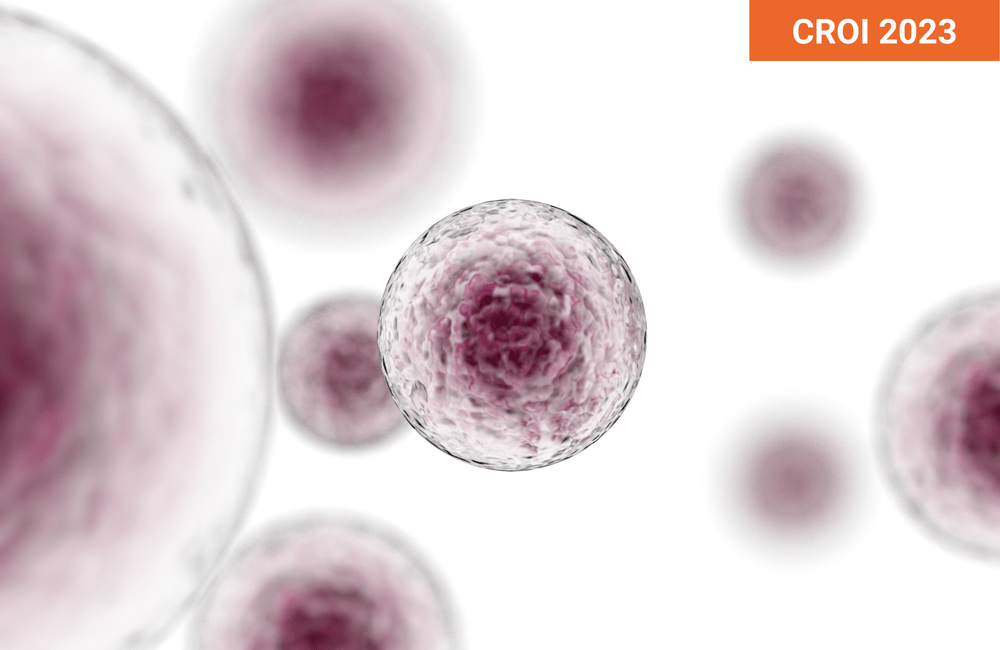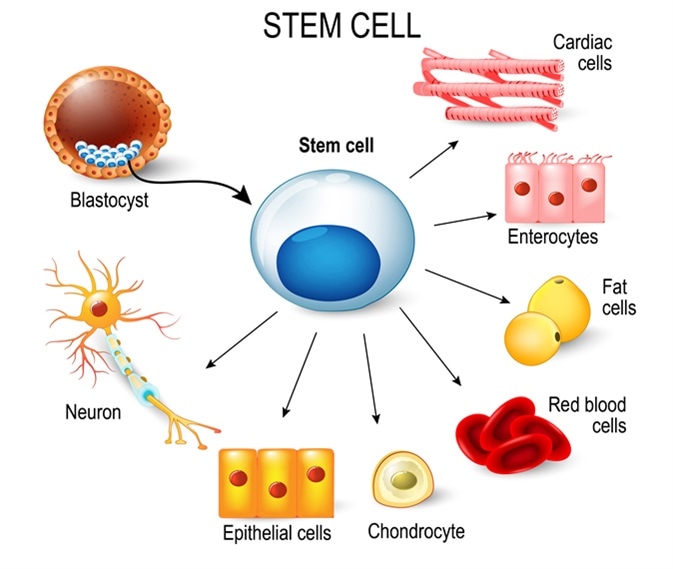A remarkable breakthrough in medical science has emerged as the first man has been cleared of HIV through an innovative stem cell treatment. This achievement not only marks a significant milestone in the fight against HIV but also brings a message of hope to countless individuals living with the virus. The journey of this courageous individual sheds light on the potential of advanced medical treatments and their impact on people’s lives.
In this article, the experiences and emotions shared by the first man cleared of HIV highlight the positive outcomes of his treatment. His willingness to speak publicly about his journey aims to inspire others navigating similar health challenges. By spreading awareness and sharing his story, he encourages hope and resilience in the HIV-positive community, making a powerful statement about the future of HIV treatment.
Understanding the HIV Epidemic and Stem Cell Treatment

Background of the HIV Epidemic
Statistics and Global Impact of HIV
The HIV epidemic has profoundly impacted millions of lives around the world. As of recent estimates, approximately 38 million people globally are living with HIV. While significant progress has been made in treatment and prevention, HIV remains a major public health issue. It’s prominent in regions such as sub-Saharan Africa, where access to healthcare can be incredibly limited. You may be surprised to learn that every year, around 1.5 million people are newly diagnosed with HIV, emphasizing the need for continued awareness and education.
Historical Perspective on HIV Treatment
When HIV was first identified in the early 1980s, it was considered a death sentence due to the lack of effective treatment. Initial treatments were rudimentary and often accompanied by severe side effects. You might find it encouraging to know that, since then, antiretroviral therapies (ART) have been developed that enable many living with HIV to lead long, healthy lives. The evolution of these treatments shows remarkable advancements in medical science. Currently, HIV is a manageable chronic condition rather than an automatic terminal illness, thanks to tireless research and advancements in treatment protocols.
Societal Stigma and Challenges Faced by HIV-Positive Individuals
Despite medical advancements, individuals living with HIV often face deep-rooted societal stigma. This stigma can manifest in various ways, such as discrimination in the workplace, relationships, and healthcare settings. As someone who might be navigating similar challenges, you understand that the fear of rejection can deter individuals from seeking necessary care or disclosing their status to loved ones. These social barriers compound the health challenges faced by HIV-positive individuals and highlight the need for ongoing public education to foster understanding and acceptance.
Stem Cell Treatment Explained
Basic Principles of Stem Cell Therapy
Stem cell therapy involves utilizing the body’s stem cells—specialized cells that can develop into different types of cells—to treat various conditions, including HIV. The premise is relatively straightforward: these cells can regenerate tissues and, in some cases, even repair damaged immune systems. You might see this groundbreaking approach as a beacon of hope for those in search of a cure, as it offers possibilities that traditional therapies do not.
Types of Stem Cells Used in Treatment
There are primarily two types of stem cells used in clinical applications: embryonic stem cells and adult stem cells. Embryonic stem cells have the potential to transform into any cell type, while adult stem cells typically specialize based on the tissue structure they originate from. In HIV treatment, hematopoietic stem cells (from the blood) have garnered attention for their ability to regenerate the immune system, which can be critical for clearing the virus from the body. It is exciting to consider how these remarkable cells can play a major role in treating HIV.
Mechanisms of Action Against HIV
Stem cell treatments aim to replace or repair the immune cells that HIV targets—primarily CD4+ T cells. By using stem cell transplants, doctors can essentially “reset” the immune system so that it no longer harbors the virus. You might visualize this as giving the body a fresh start, free from the influence of HIV. The process involves using donor stem cells that lack the CCR5 receptor, which HIV uses to enter the cells, thereby helping facilitate the protection against the virus.
Case Study: The First Man Cleared of HIV
Overview of the Case: Who is the London Patient?
In 2019, the world learned about the remarkable case of the London Patient, who became the second person in history to be declared HIV-free after undergoing stem cell treatment. You may find it intriguing that this individual, who remains anonymous, previously struggled with both HIV and lymphoma. His story has since become a cornerstone of hope and inspiration for many.
Details of the Stem Cell Treatment Received
The London Patient underwent a stem cell transplant from a donor with a rare genetic mutation that confers resistance to HIV. This intricate procedure aimed to treat both his cancer and the HIV infection simultaneously. The treatment involved a month of conditioning therapy to prepare his body, followed by the transplant itself. Understanding the complexity of this process may highlight the challenges and potential rewards of stem cell therapy in HIV treatment.
Outcomes and Follow-Up Assessments
Since the treatment, extensive follow-up assessments have shown that the London Patient remains free of HIV, marking a significant milestone in HIV research. Physicians conducted numerous tests, including looking for the virus in blood, tissue, and lymph nodes, all returning negative results. You can see how reassuring this outcome is not just for this individual but for the broader HIV community, instilling hope for future therapies.
The Emotional Journey of the London Patient
Personal Reflections on Living with HIV
Living with HIV has been a rollercoaster of emotions for the London Patient. Initially diagnosed many years ago, he navigated feelings of fear and uncertainty about what the future held. Now, reflecting on those days, he acknowledges the strength he developed over time. It’s fascinating how such experiences shape one’s perspective on life, making him acutely aware of the value of every moment.
Reactions to Being Declared HIV-Free
When he received the news of being declared HIV-free, you can imagine the overwhelming mix of emotions he must have felt—joy, relief, and disbelief. The prospect of a future without HIV was something he had once thought unimaginable. Celebrating this milestone was surrounded by emotional support from friends and healthcare providers, demonstrating the role of community in his journey.
The Role of Community and Support Systems
Community played an integral role in the London Patient’s journey. Support from fellow patients, healthcare professionals, and advocacy groups helped him feel less isolated. Such networks of solidarity emphasize the importance of connection and understanding among individuals facing similar battles. You too might resonate with the idea that having a support system can make all the difference during challenging times.

Scientific Implications of the Treatment
Impact on Current HIV Treatment Protocols
The London Patient’s case offers groundbreaking insights into the possibilities of HIV treatment. It challenges scientists and doctors to consider more aggressive treatment options for others living with the virus. As research continues to unfold, this case is likely to encourage revisions of existing treatment protocols to include more experimental approaches, which could lead to better outcomes for many.
Potential for Broader Applications of Stem Cell Therapy
The implications of stem cell therapy extend beyond HIV, hinting at possibilities for treating other viral infections and even cancers. You might see this as a stepping stone towards innovative therapies that could revolutionize how we approach various diseases. The versatility of stem cells is an area ripe for exploration, with researchers eager to uncover new applications.
Future Research Directions in HIV Treatment
The path ahead for HIV research is filled with potential. Scientists are now motivated to investigate how durable and effective stem cell therapies can be tailored for wider populations. Your support and interest in such advancements could play a role in driving research initiatives forward, as the quest for a scalable and accessible HIV cure continues.
Hope for Others Living with HIV
Messages of Encouragement from the London Patient
The London Patient has become a beacon of hope for countless individuals living with HIV. He encourages others to stay positive and resilient, promoting the message that advancements in science can lead to brighter futures. Your understanding of these encouraging words can uplift others, helping them see that hope is always possible.
Importance of Scientific Breakthroughs for Public Health
Scientific breakthroughs like this not only push the envelope in treatment options but also pave the way for better public health strategies. They encourage investment in research and awareness initiatives, which are vital for combating existing stigmas and improving health education. You might see the value in supporting such efforts as they can profoundly affect those living with HIV.
Personal Stories of Resilience and Hope from Other HIV-Positive Individuals
The experiences of the London Patient reflect a broader narrative echoed by many others in the HIV community. Personal stories of resilience highlight the strength of individuals in the face of adversity. Remember, these stories serve not just to inspire but to remind us all of the collective power of community and shared experiences.

The Role of Media and Public Engagement
How Stories of Individuals Can Influence Public Perception
Media portrayals play a crucial role in shaping public perceptions of HIV. By sharing stories like that of the London Patient, media outlets can help dismantle stigma and foster understanding. You may recognize how narratives can humanize the statistics, transforming abstract numbers back into individuals with lives and stories.
The Importance of Transparency and Sharing Personal Experiences
Transparency is essential in combating misinformation surrounding HIV. When individuals share their narratives, it provides a platform for discussion, challenges stereotypes, and encourages others to do the same. Your willingness to engage in conversations surrounding HIV can help amplify these voices, leading to increased acceptance.
Potential Impact of Media Coverage on HIV Research Funding
Increased media coverage of HIV success stories can lead to a rise in research funding. As public interest grows, so does the clockwork of advocacy and support. You might appreciate that supporting media initiatives is just as important as scientific advancements, as they can change the landscape of funding opportunities for ongoing research.
Challenges and Ethical Considerations
Ethical Dilemmas in Experimental Stem Cell Treatments
As promising as they are, stem cell therapies come with ethical considerations that must be navigated. Questions about the sourcing of stem cells, consent, and potential risks to individuals arise when considering experimental treatments. You might understand why it is crucial to maintain ethical standards to ensure that participants make informed decisions regarding experimental procedures.
Access to Cutting-Edge Therapies for Marginalized Groups
The disparity in access to advanced treatments remains a significant concern. Often, marginalized groups are denied opportunities to participate in groundbreaking therapies due to socio-economic factors. As a socially aware individual, you recognize the importance of advocating for equal access to these vital treatments, ensuring that everyone has a fighting chance against HIV.
Regulatory Hurdles in Bringing Therapies to Market
Alongside ethical considerations, regulatory challenges can stall innovations from reaching individuals who need them most. The complexities of a healthcare system often result in extended timelines for new treatments to become available. You may find it essential to support efforts aimed at streamlining these processes, facilitating quicker access for patients in need.

Expert Opinions and Perspectives
Insights from Leading Researchers in HIV Treatment
Leading researchers in the field of HIV treatment have praised the advancements made through stem cell research. Their insights highlight the importance of ongoing studies and the collaboration of researchers worldwide. By sharing knowledge and resources, there is an opportunity to accelerate the path toward a comprehensive cure. You could take inspiration from their collective dedication to this cause.
The Significance of Collaborative Efforts in Healthcare
Collaboration is crucial within the medical community, particularly regarding complex diseases like HIV. Researchers, healthcare professionals, and advocacy groups need to unite to enhance the quality of care and expand access to treatments. You might think of this as a united front against a common enemy, where every contribution counts.
Feedback from Community Organizations Supporting HIV-Positive People
Community organizations focusing on the welfare of those living with HIV have invaluable insights into the real-world implications of treatment advancements. Their feedback is vital for understanding the needs of the community and shaping future research directions. Engaging with such organizations can provide you with a broader understanding of the challenges faced by individuals living with HIV.
Conclusion
Summarizing the Hope Sparked by the London Patient’s Story
The London Patient’s journey offers a narrative of hope and perseverance, epitomizing the potential for advanced treatment options in the fight against HIV. His case serves as a powerful reminder that groundbreaking scientific endeavors can lead to life-changing discoveries, giving renewed hope to countless individuals.
The Ongoing Fight Against HIV and the Path Forward
While we celebrate the advances made in HIV treatment, it’s important to remember that the fight is far from over. Scientific research must continue unabated, focusing not only on potential cures but also on improving access to existing treatments. Your role in this fight—whether through raising awareness, supporting advocacy initiatives, or simply engaging in conversation—is crucial.
Encouragement to Support HIV Research and Awareness Initiatives
As someone who is passionate about health and wellness, consider lending your voice and support to HIV research and awareness initiatives. By doing so, you help create a more informed society that values the lives of those living with HIV. Together, you and others can transform hope into action, ensuring that everyone has access to the care they need and deserve.

Stem cells have the extraordinary ability to repair and regenerate damaged cells, making them a promising solution for many chronic conditions. However, traditional stem cell therapy is often out of reach due to high costs, the need for donors, or the requirement to travel abroad. Fortunately, a groundbreaking stem cell technology is now available, offering a more affordable and accessible way to experience these benefits.
This technology complements healthy lifestyle habits—like eating well, exercising, and reducing toxins—to enhance the body’s natural healing processes. It accelerates recovery, supports immune function, and combats inflammation by strengthening your cells. To learn how this innovative solution can benefit you, your loved ones, or those facing health challenges, contact me at stemboostx@gmail.com with the subject “AIWNBOX.”




